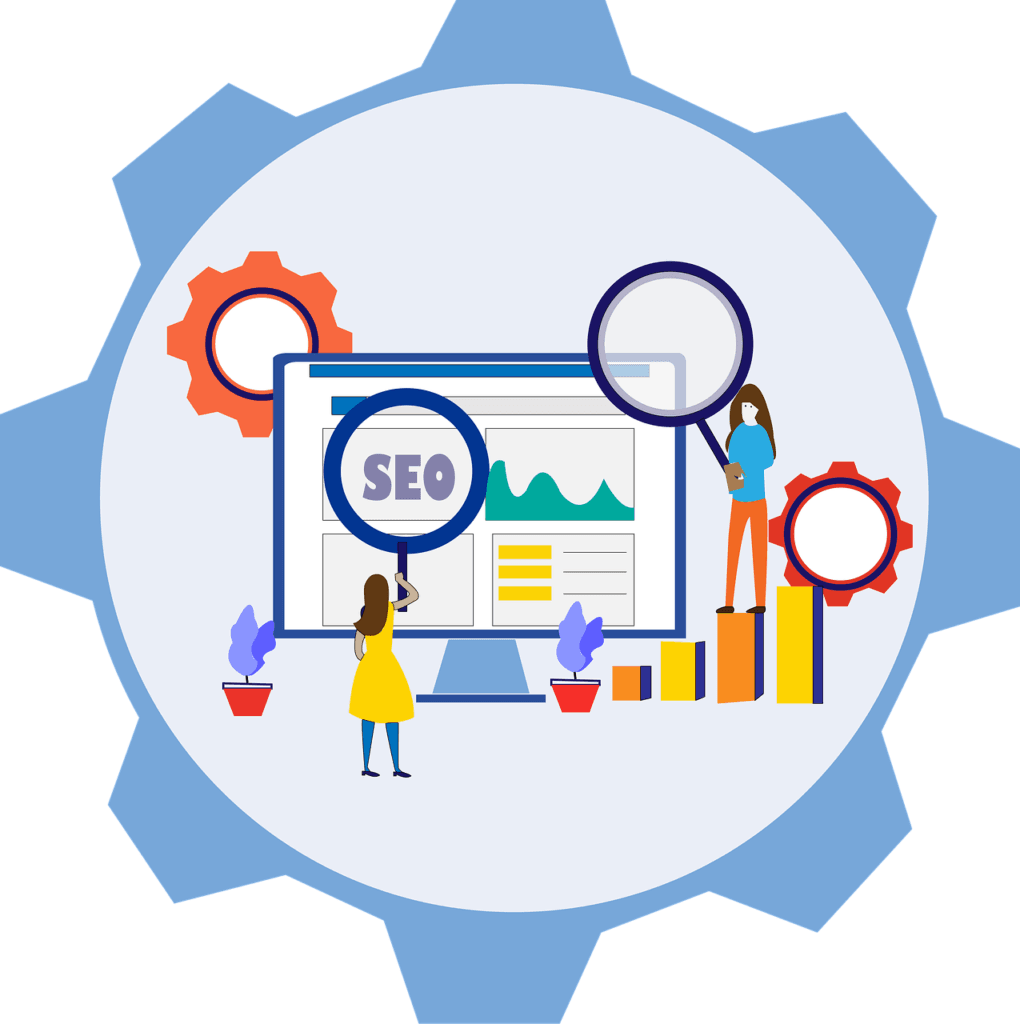Lead nurturing is the backbone of any successful sales strategy. It’s the process of guiding prospects through the buyer’s journey, building trust, and ensuring they’re ready to take the plunge when the time is right. But as businesses grow and customer expectations evolve, traditional methods of lead nurturing can feel slow and cumbersome. Enter artificial intelligence (AI), a game-changer in the way companies manage and nurture leads.
This guide dives deep into the battle between AI and manual lead nurturing. It’s not about picking a side—it’s about understanding how each approach works and how to strike the right balance for your business. CEOs need faster results without sacrificing the personal touch, and this article shows how AI can supercharge your efforts while keeping relationships at the center.
Let’s explore the nuances of AI and manual lead nurturing to uncover which approach delivers faster results—and how to combine the best of both worlds.
Step 1: Understanding the Foundations of Lead Nurturing
The Manual Approach: Personal but Time-Consuming
Manual lead nurturing relies heavily on human touch. Sales teams interact directly with prospects, tailoring each conversation based on the lead’s needs and preferences. It’s a method that fosters strong relationships, as leads feel valued and understood. However, it’s also a time-intensive process.
For example, manually following up with every lead after a webinar requires significant effort. Sales reps must sift through attendee lists, send personalized emails, and track responses. While effective, this method limits scalability—your team can only handle so many leads at once.
Manual nurturing is ideal for high-value accounts where personal interaction is crucial, but it’s not built for speed or scale.
AI: Efficient and Scalable
AI-driven lead nurturing automates repetitive tasks while personalizing interactions at scale. By analyzing data, AI identifies patterns in lead behavior, predicts what they need next, and delivers tailored content without human intervention. This approach saves time and ensures consistent communication across a large audience.
For instance, AI can send automated follow-up emails to webinar attendees, dynamically tailoring the message based on whether they downloaded resources or visited your website afterward. These interactions feel personalized, even though they’re powered by algorithms.
AI excels in speed and scalability, but it risks feeling impersonal if not executed thoughtfully.
The Need for a Balanced Approach
Both manual and AI-driven nurturing have strengths and limitations. The key lies in knowing when to use each method. High-touch manual efforts work best for leads nearing conversion or complex B2B deals, while AI shines in the early stages of engagement and repetitive follow-ups.
By blending these approaches, businesses can achieve faster results without sacrificing quality. The goal is to use AI as a tool to enhance manual efforts, ensuring leads receive the right attention at the right time.
A balanced strategy maximizes efficiency while maintaining the human connection.
Step 2: Automating Repetitive Tasks with AI

Freeing Up Time for High-Value Activities
One of AI’s biggest advantages is its ability to handle repetitive tasks, freeing up your sales team to focus on more strategic activities. Tasks like sending follow-up emails, tracking lead engagement, and scoring leads are time-consuming but essential. AI automates these processes seamlessly.
For example, AI can monitor a lead’s activity—such as opening emails or visiting product pages—and automatically trigger the next action, like sending a case study or scheduling a demo. This eliminates the need for manual tracking and ensures leads move smoothly through the funnel.
Automation gives your team more time to engage with leads who require personalized attention.
Ensuring Consistency Across the Funnel
Manual processes often lead to inconsistencies. Different sales reps might approach similar leads in different ways, creating gaps in the customer experience. AI eliminates this issue by ensuring every lead receives consistent communication based on predefined workflows.
For instance, AI-powered tools like HubSpot or Marketo can segment your audience and send targeted messages tailored to their stage in the buyer’s journey. Whether a lead is just discovering your brand or ready to buy, AI ensures they receive the right message at the right time.
Consistency builds trust and keeps leads engaged, accelerating their journey through the funnel.
Scaling Efforts Without Compromising Quality
As businesses grow, managing a large volume of leads manually becomes nearly impossible. AI allows you to scale your lead nurturing efforts without sacrificing quality. Whether you’re dealing with hundreds or thousands of leads, AI ensures each one receives personalized attention.
For example, an e-commerce business can use AI to recommend products to customers based on their browsing history, sending tailored offers that feel unique. Meanwhile, the sales team can focus on high-value opportunities that require human interaction.
AI scales personalization, ensuring every lead feels valued regardless of your business size.
Step 3: Personalizing at Scale with AI

Dynamic Content That Adapts to Behavior
AI enables dynamic content that changes based on a lead’s behavior and preferences. For instance, if a lead downloads an e-book on a specific topic, AI can recommend related resources or case studies to deepen their engagement.
This level of personalization goes beyond simple segmentation. AI analyzes real-time data, ensuring each interaction feels relevant and timely. For example, if a lead frequently visits your pricing page, AI might trigger an email offering a free consultation or demo.
Dynamic content keeps leads engaged, guiding them through the funnel faster.
Predictive Analytics for Smarter Campaigns
AI doesn’t just react to lead behavior—it predicts it. Using predictive analytics, AI identifies which leads are most likely to convert and suggests the best actions to nurture them. For example, if a lead’s behavior matches that of past high-value customers, AI can prioritize them for sales follow-up.
Predictive insights also help tailor campaigns. If AI predicts that a lead will respond well to a discount offer, it can trigger a targeted promotion, increasing the likelihood of conversion. These insights ensure your campaigns are always one step ahead.
Smarter campaigns mean fewer wasted efforts and faster results.
Real-Time Personalization Across Channels
AI allows for seamless personalization across multiple channels, including email, social media, and chatbots. For instance, a lead engaging with your Instagram ad might receive a follow-up email reinforcing the same message, creating a cohesive experience.
Real-time personalization ensures that leads feel understood no matter where they interact with your brand. This omnichannel approach keeps your message consistent and relevant, increasing the chances of conversion.
Personalization across channels builds trust and strengthens relationships, driving faster results.
Step 4: Leveraging the Human Touch Where It Matters Most

Building Trust with Personalized Interactions
While AI excels at scaling personalization, the human touch is irreplaceable when it comes to building trust. Leads nearing conversion or dealing with complex decisions often require direct interaction with a sales rep who can address their concerns.
For instance, a lead evaluating a high-ticket SaaS solution might need a personalized demo and answers to specific questions. AI can provide the context, such as the lead’s engagement history and preferences, but the sales rep’s expertise seals the deal.
Human interaction builds rapport, turning prospects into loyal customers.
Navigating Complex Sales Cycles
B2B sales often involve multiple decision-makers and long cycles. In these cases, manual efforts are essential to navigate complexities, answer detailed questions, and build consensus among stakeholders. AI supports this by providing insights and recommendations, but the sales team drives the relationship.
For example, AI might flag key decision-makers in an account and suggest tailored messaging. The sales rep can then use this information to craft a pitch that addresses each stakeholder’s priorities.
Combining AI insights with manual efforts ensures success in complex sales scenarios.
Closing Deals with a Human Touch
The final stages of the funnel require a delicate balance of urgency and reassurance. While AI can suggest offers or timing, closing the deal often depends on a human connection. Sales reps can address last-minute objections, negotiate terms, and create a sense of partnership.
For instance, during contract negotiations, a sales rep might use AI-generated insights to highlight the lead’s pain points and demonstrate how your solution addresses them. This collaborative approach ensures the lead feels confident in their decision.
The human touch is crucial for turning opportunities into wins.

Related: Check out our free tools:

Step 5: Measuring Success and Refining the Process
Tracking Key Metrics with AI
AI provides detailed analytics to track the performance of your lead nurturing efforts. Metrics like email open rates, engagement levels, and conversion rates offer insights into what’s working and where improvements are needed.
For instance, if a particular email sequence underperforms, AI can suggest changes to the subject line or content based on past successes. These insights allow you to refine your strategy continuously.
Data-driven decisions ensure your lead nurturing process evolves with your audience’s needs.
Testing and Optimizing Campaigns
AI excels at A/B testing, allowing you to experiment with different messaging, timing, and offers. For example, AI might test two versions of a follow-up email and automatically scale the one that performs better.
These optimizations ensure your campaigns stay relevant and effective, driving faster results over time.
Continuous testing keeps your strategy fresh and aligned with audience preferences.
Balancing AI and Manual Efforts
Success lies in finding the right balance between AI and manual nurturing. Use AI to handle repetitive tasks, personalize interactions at scale, and provide actionable insights. Meanwhile, focus manual efforts on high-value leads and critical touchpoints.
Regularly assess the balance to ensure both approaches complement each other, delivering the best results.
A balanced approach ensures efficiency and effectiveness, maximizing ROI.
Step 6: Implementing AI-Driven Nurturing in Real-World Scenarios

Scaling Outreach for High-Volume Leads
In high-volume industries, managing lead nurturing manually can be overwhelming. AI provides a scalable solution that ensures no lead is overlooked. For example, an e-commerce platform might have thousands of prospects visiting their site daily. Manually reaching out to each one isn’t feasible, but AI can step in to create personalized email campaigns, recommend products, and trigger follow-ups based on behavior.
AI tools analyze browsing patterns, such as the number of items viewed, cart additions, or abandoned checkouts. These insights power tailored communication, like sending discount reminders or highlighting complementary products. This automation doesn’t just save time; it drives better results by keeping leads engaged without delays.
In these high-volume scenarios, AI becomes a critical enabler of consistent and meaningful interactions.
Supporting Niche Markets with Manual Precision
While AI excels in high-volume situations, manual nurturing shines in niche markets where leads expect a highly tailored experience. For example, a luxury travel company might deal with fewer but more high-value leads. Here, the sales team must personally address unique preferences and build relationships.
AI can still support this process by providing detailed profiles of each lead, including their travel history, budget, and interests. With these insights, sales reps can craft personalized itineraries, suggest exclusive destinations, or schedule one-on-one consultations.
By combining AI insights with manual precision, businesses in niche markets can deliver standout experiences that turn leads into loyal customers.
Blending Both Approaches in Hybrid Sales Cycles
For businesses with hybrid sales cycles—those that mix high-volume prospects with high-value deals—using both AI and manual efforts is essential. AI handles initial outreach, segmentation, and nurturing, while manual efforts focus on closing critical deals.
For instance, a SaaS company might use AI to engage leads early by sending educational content, webinar invitations, or demo offers. Once a lead shows strong intent, the sales team takes over to address specific needs and finalize the sale. This approach ensures efficiency in the early stages while maintaining a human touch where it matters most.
Hybrid cycles demonstrate how AI and manual nurturing can coexist, maximizing results across the board.
Step 7: Overcoming Challenges in Combining AI and Manual Efforts

Ensuring AI Is Aligned with Human Teams
One challenge in integrating AI is ensuring alignment between automated systems and human teams. If AI sends communications that conflict with sales reps’ messaging or timing, it can create confusion and harm the lead experience. The solution lies in clear workflows and constant communication between AI platforms and teams.
For example, set rules where AI stops automated nurturing once a lead is handed over to a sales rep. Ensure that AI tools provide clear logs of lead activity, so sales reps have full context before reaching out. This alignment ensures a smooth transition between AI and manual efforts.
Collaboration between AI and teams creates a seamless experience for leads and avoids missteps.
Maintaining Personalization at Scale
While AI enables personalization at scale, there’s a risk of over-automation making interactions feel robotic. Leads can sense when communications lack a genuine touch, which can reduce trust and engagement.
To address this, AI tools should use language that feels natural and aligned with your brand’s voice. For example, emails triggered by AI can still include conversational tones, personal names, and tailored content based on individual behaviors. Sales teams can step in to add an extra layer of customization for high-priority leads.
Maintaining a balance between automation and authenticity ensures that every interaction feels meaningful.
Training Teams to Use AI Effectively
Adopting AI requires a shift in mindset for sales and marketing teams. Some team members might resist the change, fearing that AI will replace their roles. It’s essential to position AI as a tool that enhances their capabilities rather than replaces them.
Provide training sessions to help teams understand how AI works, what insights it provides, and how they can use these insights to improve their performance. For instance, show how AI-driven lead scoring helps prioritize high-value leads, enabling reps to focus on closing deals faster.
With proper training, teams will view AI as an ally, empowering them to achieve better results.
Step 8: Measuring Success and Refining Strategies

Tracking AI Performance Metrics
To gauge the effectiveness of AI-driven nurturing, track key performance indicators (KPIs) like conversion rates, response times, and lead-to-opportunity ratios. Compare these metrics to your manual efforts to identify where AI is delivering the most value.
For example, if AI reduces the average time-to-close by 20%, that’s a clear indicator of its impact. Similarly, track open and click-through rates for AI-generated emails to see how well they engage your audience. Use these insights to fine-tune your campaigns and workflows.
Measuring success ensures you’re making data-driven decisions to optimize your nurturing strategy.
Regularly Reviewing and Adjusting Workflows
AI tools thrive on data, but they need regular input and refinement to stay effective. Periodically review your workflows to ensure they align with your business goals and audience preferences. For instance, if a particular segment shows low engagement, reassess the content or timing of your AI-triggered communications.
Additionally, gather feedback from your sales team to identify gaps or challenges in the AI process. If reps struggle to interpret AI insights, refine the reporting or provide additional training.
Continuous improvement keeps your AI and manual efforts aligned and effective.
Scaling as Your Business Grows
As your business expands, your lead nurturing needs will evolve. AI provides the flexibility to scale without compromising quality. For example, if you enter new markets or launch additional products, AI can handle the increased volume of leads while adapting campaigns to different segments.
Ensure that your AI tools can integrate with your growing tech stack, from CRMs to marketing platforms. This scalability ensures your lead nurturing process remains seamless and effective, no matter how much your business grows.
Scaling with AI future-proofs your lead nurturing strategy for long-term success.
Conclusion: AI and Manual Nurturing—Stronger Together
The debate between AI and manual lead nurturing isn’t about choosing one over the other—it’s about leveraging both to create a seamless, efficient, and personalized experience. AI brings speed, scalability, and data-driven precision, while manual efforts add the human touch that builds trust and closes deals.
By combining the strengths of both approaches, CEOs can achieve faster results without sacrificing quality. Start integrating AI into your lead nurturing process today, and watch as your sales funnel transforms into a powerful engine for growth. The future of lead nurturing is here, and it’s all about balance.
READ NEXT:
- Are Vanity Metrics Killing Your Marketing Efficiency? Here’s What to Track Instead
- Pinpointing Digital Marketing ROI: Why Your Metrics Aren’t Telling the Full Story
- Unlocking Real ROI in Digital Marketing: The Hidden Costs Draining Your Budget
- How Misaligned Marketing Funnels Are Blocking Your ROI Potential
- Best Digital Marketing Agency In Santa Ana, California
- Best Digital Marketing Agency In San Francisco, California





















